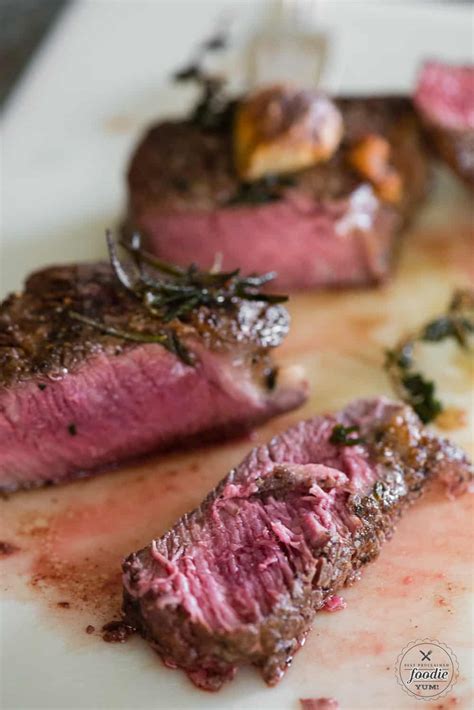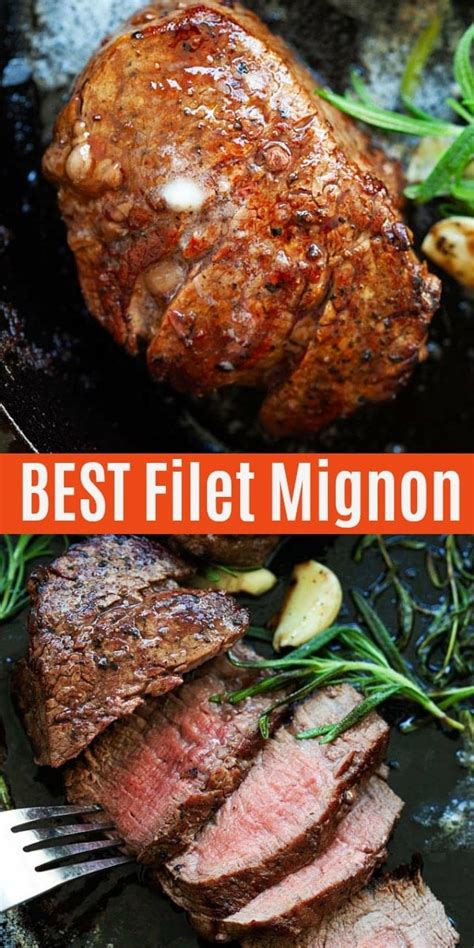
Achieve filet mignon-like tenderness and flavor without the premium beef price tag by exploring alternative cuts of meat and innovative cooking techniques.
For those seeking a luxurious dining experience on a budget, achieving the coveted tenderness of filet mignon without breaking the bank is entirely possible. The secret lies in understanding the characteristics of filet mignon and replicating them through careful selection of alternative meats and employing specific cooking methods. Filet mignon, known for its buttery texture and subtle flavor, comes from the tenderloin, a muscle that sees very little use, resulting in its exceptional tenderness. However, its limited quantity per animal contributes to its high cost.
Alternative Cuts and Meats
Several cuts of beef, pork, and even poultry can mimic the desirable qualities of filet mignon when prepared correctly.
- Pork Tenderloin: Often dubbed “pork filet mignon,” pork tenderloin offers a similar shape and tenderness at a fraction of the cost. “Pork tenderloin is a fantastic substitute,” explains chefs. Its mild flavor makes it incredibly versatile and receptive to various marinades and seasonings.
- Sirloin Tip: While not as inherently tender as filet mignon, sirloin tip roast possesses a rich beefy flavor and can be tenderized through proper marinating and cooking.
- Tri-Tip: This triangular cut from the bottom sirloin boasts a robust flavor and, when sliced against the grain, delivers a satisfyingly tender bite.
- Chicken Breast: Surprisingly, chicken breast can also achieve a filet mignon-like tenderness with the right approach. Brining or marinating the chicken breast before cooking helps to break down the muscle fibers, resulting in a moist and tender final product.
Mastering the Cooking Techniques
The cooking method plays a crucial role in maximizing the tenderness of any cut of meat.
- Reverse Sear: This technique involves slowly cooking the meat at a low temperature until it reaches the desired internal temperature, followed by a quick sear in a hot pan to develop a flavorful crust. The low temperature cooking ensures even doneness and minimizes moisture loss, while the sear provides a desirable textural contrast.
- Sous Vide: Sous vide cooking involves sealing the meat in a vacuum-sealed bag and immersing it in a water bath held at a precise temperature. This method guarantees even cooking and unparalleled tenderness, as the meat is gently brought to the desired doneness without the risk of overcooking.
- Marinating: Marinating tough cuts of meat helps to break down muscle fibers and add flavor. Acidic marinades, containing ingredients like vinegar or citrus juice, are particularly effective at tenderizing meat.
- Pounding: Pounding meat with a meat mallet physically breaks down muscle fibers, resulting in a more tender texture. This technique is particularly useful for thinner cuts of meat, such as chicken breast or pork cutlets.
Enhancing Flavor Profiles
While tenderness is paramount, flavor is equally important. Experimenting with different seasonings, herbs, and sauces can elevate your budget-friendly alternative to a gourmet experience.
- Herb Butter: A compound butter infused with fresh herbs, such as rosemary, thyme, and parsley, adds a rich and aromatic flavor to any cut of meat.
- Red Wine Reduction: A classic sauce made by simmering red wine with aromatics like shallots and herbs creates a complex and savory flavor that complements beef, pork, and even chicken.
- Mushroom Sauce: A creamy mushroom sauce adds an earthy and umami-rich flavor to your dish.
- Dry Rubs: For a bolder flavor, consider using a dry rub composed of spices like paprika, garlic powder, onion powder, and chili powder.
Detailed Breakdown of Alternative Cuts
Let’s delve deeper into each alternative cut, exploring their specific characteristics and how to best prepare them.
Pork Tenderloin: The “Other” Filet Mignon
Pork tenderloin is a long, cylindrical muscle located along the backbone of the pig. It’s incredibly lean and tender, making it a fantastic substitute for beef filet mignon.
- Flavor Profile: Mild and slightly sweet.
- Texture: Tender and delicate.
- Best Cooking Methods: Roasting, grilling, pan-searing, sous vide.
- Tips for Success:
- Trim off any silverskin (a thin, silvery membrane) to prevent it from shrinking and toughening during cooking.
- Marinate for at least 30 minutes to enhance flavor and moisture.
- Cook to an internal temperature of 145°F (63°C).
- Let rest for 5-10 minutes before slicing.
Sirloin Tip: A Budget-Friendly Beef Option
Sirloin tip, also known as the knuckle, is a lean and relatively tough cut of beef located in the round primal. While it requires more effort to tenderize than filet mignon, its rich beefy flavor makes it a worthwhile alternative.
- Flavor Profile: Robust and beefy.
- Texture: Can be tough if not properly prepared.
- Best Cooking Methods: Marinating, braising, slow-cooking, grilling (with careful attention).
- Tips for Success:
- Marinate for at least 4 hours, or preferably overnight, in an acidic marinade.
- Pound the meat with a meat mallet to break down muscle fibers.
- Cook to an internal temperature of 130-135°F (54-57°C) for medium-rare, or 140-145°F (60-63°C) for medium.
- Slice thinly against the grain.
Tri-Tip: A Californian Favorite
Tri-tip is a triangular cut from the bottom sirloin. It’s known for its rich flavor and tender texture when sliced against the grain.
- Flavor Profile: Rich and beefy with a slightly smoky flavor.
- Texture: Tender when sliced correctly.
- Best Cooking Methods: Grilling, smoking, roasting.
- Tips for Success:
- Season generously with salt, pepper, and your favorite spices.
- Grill over medium-high heat to an internal temperature of 130-135°F (54-57°C) for medium-rare, or 140-145°F (60-63°C) for medium.
- Let rest for 10-15 minutes before slicing.
- Identify the grain and slice against it for maximum tenderness.
Chicken Breast: Unexpected Tenderness
While not traditionally associated with filet mignon, chicken breast can achieve surprising tenderness with the right techniques.
- Flavor Profile: Mild and versatile.
- Texture: Can be dry and tough if overcooked, but tender when properly prepared.
- Best Cooking Methods: Brining, marinating, pan-searing, sous vide.
- Tips for Success:
- Brine or marinate for at least 30 minutes to enhance moisture and tenderness.
- Pound the chicken breast to an even thickness to ensure even cooking.
- Cook to an internal temperature of 165°F (74°C).
- Let rest for 5-10 minutes before slicing.
Detailed Cooking Technique Guide
Let’s break down the cooking techniques mentioned earlier in more detail.
Reverse Sear: The Secret to Even Doneness
The reverse sear method is a game-changer for achieving perfectly cooked meat. It involves slowly cooking the meat at a low temperature until it reaches the desired internal temperature, followed by a quick sear in a hot pan to develop a flavorful crust.
- Low-Temperature Cooking: Preheat your oven to a low temperature, typically between 200-275°F (93-135°C). Place the seasoned meat on a wire rack set inside a baking sheet. Cook until the internal temperature is about 10-15°F (5-8°C) below your desired doneness. Use a meat thermometer to monitor the temperature.
- Searing: Remove the meat from the oven and let it rest for a few minutes. Heat a heavy-bottomed skillet, preferably cast iron, over high heat. Add a high-smoke-point oil, such as avocado oil or grapeseed oil. Once the pan is smoking hot, sear the meat for 1-2 minutes per side, until a golden-brown crust forms.
- Resting: Let the meat rest for 5-10 minutes before slicing and serving. This allows the juices to redistribute throughout the meat, resulting in a more tender and flavorful final product.
Sous Vide: Precision Cooking for Unmatched Tenderness
Sous vide is a French term that translates to “under vacuum.” It involves sealing food in a vacuum-sealed bag and immersing it in a water bath held at a precise temperature. This method ensures even cooking and unparalleled tenderness.
- Preparation: Season the meat with salt, pepper, and your favorite spices. Place it in a vacuum-sealed bag along with any desired herbs or aromatics.
- Water Bath: Fill a large pot or container with water and attach a sous vide immersion circulator. Set the circulator to the desired temperature based on your desired doneness. For example, 130°F (54°C) for medium-rare.
- Cooking: Immerse the vacuum-sealed bag in the water bath, ensuring that it is fully submerged. Cook for the recommended time, which can range from 1-4 hours depending on the thickness and type of meat.
- Searing (Optional): After sous vide cooking, you can sear the meat in a hot pan to develop a flavorful crust. Follow the searing instructions outlined above.
- Resting: Let the meat rest for a few minutes before slicing and serving.
Marinating: Tenderizing and Flavoring
Marinating is a technique that involves soaking meat in a flavorful liquid for a period of time. This helps to tenderize the meat, add moisture, and infuse it with flavor.
- Marinade Ingredients: Marinades typically consist of three main components:
- Acid: An acidic ingredient, such as vinegar, citrus juice, or wine, helps to break down muscle fibers and tenderize the meat.
- Oil: Oil helps to prevent the meat from drying out during cooking.
- Flavorings: Herbs, spices, garlic, and other aromatics add flavor to the meat.
- Marinating Time: The amount of time you marinate the meat depends on the type of meat and the strength of the marinade. Tender cuts of meat, such as chicken breast or pork tenderloin, only need to be marinated for 30 minutes to a few hours. Tougher cuts of meat, such as sirloin tip, can be marinated for several hours or even overnight.
- Safety: Always marinate meat in the refrigerator to prevent bacterial growth.
Pounding: Physically Tenderizing
Pounding meat with a meat mallet is a simple and effective way to physically break down muscle fibers and tenderize the meat.
- Preparation: Place the meat between two sheets of plastic wrap or in a resealable plastic bag.
- Pounding: Use a meat mallet to pound the meat to an even thickness. Start in the center and work your way outwards.
- Caution: Be careful not to pound the meat too thin, as this can make it dry out during cooking.
Frequently Asked Questions (FAQ)
-
What makes filet mignon so tender? Filet mignon comes from the tenderloin, a muscle that sees very little use, resulting in its exceptional tenderness and fine texture.
-
Can I really achieve a similar texture to filet mignon with pork tenderloin? Yes, pork tenderloin, often called “pork filet mignon,” offers a similar shape and tenderness. Its mild flavor makes it versatile for various marinades and seasonings.
-
Is marinating necessary for all the alternative cuts? No, but it’s highly recommended for tougher cuts like sirloin tip to help break down muscle fibers and add moisture and flavor.
-
What internal temperature should I cook pork tenderloin to? Pork tenderloin should be cooked to an internal temperature of 145°F (63°C). Allow it to rest for 5-10 minutes before slicing.
-
What is the key to tenderizing chicken breast for a filet mignon-like texture? Brining or marinating the chicken breast before cooking helps break down muscle fibers, resulting in a moist and tender final product. Pounding it to an even thickness also aids in even cooking.
-
What is the reverse sear method, and why is it beneficial? The reverse sear involves cooking meat at a low temperature until it’s nearly done, then searing it in a hot pan. This ensures even doneness and a flavorful crust.
-
How does sous vide cooking enhance tenderness? Sous vide involves sealing meat in a vacuum-sealed bag and cooking it in a water bath at a precise temperature, guaranteeing even cooking and unmatched tenderness by gently bringing the meat to the desired doneness without overcooking.
-
What type of marinade is best for tougher cuts of beef? Acidic marinades containing ingredients like vinegar or citrus juice are particularly effective at tenderizing tougher cuts of meat.
-
Why is it important to slice tri-tip against the grain? Slicing against the grain shortens the muscle fibers, making the meat significantly more tender and easier to chew.
-
What are some flavor enhancers that can elevate alternative cuts of meat? Herb butter, red wine reduction, mushroom sauce, and dry rubs can add rich and aromatic flavors, enhancing the overall dining experience.
-
How long should I marinate sirloin tip? Marinate for at least 4 hours, or preferably overnight, in an acidic marinade for best results.
-
What is the ideal internal temperature for cooking tri-tip? Grill tri-tip to an internal temperature of 130-135°F (54-57°C) for medium-rare, or 140-145°F (60-63°C) for medium.
-
What is the recommended internal temperature for cooked chicken breast?
Chicken breast must be cooked to a safe internal temperature of 165°F (74°C).
-
How can I prevent chicken breast from drying out during cooking? Brining or marinating, pounding to an even thickness, and avoiding overcooking are crucial for keeping chicken breast moist and tender.
-
Can I use the same cooking techniques for all the alternative cuts of meat? While some techniques, like marinating, can be applied universally, the best cooking method varies depending on the specific cut of meat and its inherent tenderness.
-
What is silverskin, and why should it be removed from pork tenderloin? Silverskin is a thin, silvery membrane on pork tenderloin that can shrink and toughen during cooking, so it’s best to trim it off.
-
What type of oil is best for searing meat at high temperatures? High-smoke-point oils, such as avocado oil or grapeseed oil, are ideal for searing meat at high temperatures.
-
How long should meat rest after cooking? Allow meat to rest for 5-15 minutes after cooking, depending on the size and type of cut, to allow the juices to redistribute.
-
What is the ideal temperature for sous vide cooking of a meat to achieve a medium rare state? The ideal water bath temperature for medium-rare is approximately 130°F (54°C).
-
What is the importance of a meat thermometer in these cooking methods? A meat thermometer is critical for precisely monitoring internal temperature, ensuring perfectly cooked meat without the risk of undercooking or overcooking.









